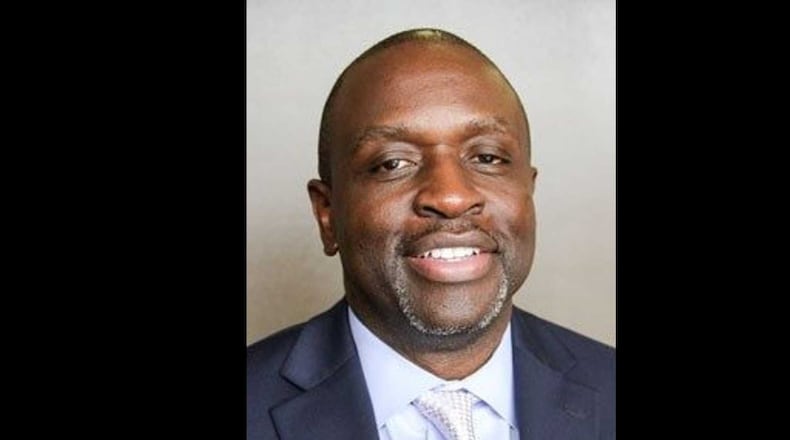It was among the top political issues in the state not long ago, but Georgia’s initiative to improve the worst-performing public schools no longer holds center stage.
There are early questions about the program’s effectiveness. And with funding that is already below what other states have committed to similar efforts, can Georgia’s first Chief Turnaround Officer and his fledgling team thrive or even survive after its champion leaves office?
When Gov. Nathan Deal pitched his Opportunity School District to voters as a constitutional amendment in 2016, they cried foul. The opposition to state school takeovers was widespread and crossed party lines, from PTAs to school boards, civil rights groups to local political leaders. After a rout at the polls, lawmakers regrouped in 2017 and produced a kinder, gentler version for Deal. Schools would no longer be deemed "chronically failing," and would instead be labelled "turnaround eligible." The state could no longer take them over unilaterally, having instead to coax school districts to participate. It was so important that the General Assembly called the law "the First Priority Act."
Since it passed, the program has taken in 20 of the state’s worst-performing schools, which serve about 10,000 students.
Proponents want expansion, while others question the early results and note a deeper problem: the program seems redundant since it helps many schools already targeted for help by the Georgia Department of Education’s Division of School and District Effectiveness.
Ben Scafidi, a Kennesaw State University economics of education professor who was appointed by Deal to an education working group, said the governor's passion for school improvement is apparently what led lawmakers to create the turnaround program and put it within Deal's chain of command. They did this despite the existence of the similar program run by the elected state superintendent, Richard Woods. Woods had asked lawmakers to put the turnaround program under his authority, but they deferred to the governor, who'd been critical of Woods' performance, noting in correspondence that the number of "chronically failing" schools increased during Woods' tenure as superintendent.
"Clearly," Scafidi, said, "the turnaround office and the Division of School and District Effectiveness are duplicative." Lawmakers should evaluate the performance of each and make a "very careful decision" about where to put taxpayer money, he said.
The Deal program may have a disadvantage: the funding may be too low, said Gary Henry, an expert on school improvement. Georgia is spending about $3 million, according to the Georgia Department of Education. That breaks down to about $300 per child. Successful programs Henry has studied, including one in his home state of Tennessee, cost at least $1,000 per student. The best strategy is to recruit and retain effective principals and teachers, which can be costly, he said. “Most of the money is spent on performance bonuses or salary supplements in these schools.”
Eric Thomas, the Georgia turnaround chief, offered a cautious response when asked whether he had enough money and if he’d be asking for more. “Nothing concrete about budget has been established,” he responded in an email.
His top boss on the state education board, Chairman Scott Johnson, was similarly diplomatic: “We want the program to expand,” he said, with this caveat: “as staff and budget allow.”
Johnson has heard promising reports from local superintendents. One, Kenneth Dyer in Dougherty County, said his tiny rural district had lacked the resources to improve the schools. Thomas brought in trainers to help staff execute improvement plans already developed with the state education department. “It’s a lot of work that you put on schools. That’s why the additional resources are so important,” he said.
Two of Dyer's schools improved so much on the state's official report card that they are no longer turnaround eligible, one gaining 18 points on the 100-point scale and the other 9. But another went backwards, losing 3 points.
Typically, schools need at least three years for improvements to take hold. That said, Henry found the uneven scores within districts like Dougherty “a bit worrisome.” His comments were based on an AJC analysis of the state report card scores for Thomas’ partner schools, all of them outside metro Atlanta, many in remote parts of the state. Nine were adopted too recently to attribute changes to Thomas’ team. Of the first 11 schools adopted a year ago, seven improved and four got worse. And, as in Dougherty, the point gains among the improved schools exceeded the losses for those that did worse.
Four of the schools, including the two in Dougherty, have improved so much they are no longer on the list of turnaround eligible schools. State Rep. Kevin Tanner, R-Dawsonville, the main author of the First Priority Act, sees that as a positive sign. Even so, he said lawmakers are less interested in scores at this early point than in giving at-risk students a helping hand. For instance, he praised Thomas’ focus on unaddressed health problems, such as vision impairment and hearing loss, that can undermine a student’s performance. He predicted that a modest budget request to better coordinate such services — “we’re talking about a low amount” — would be met favorably under the Gold Dome in 2019.
It’s unclear how lawmakers will weigh the benefit of the investment. Dana Rickman, vice president of the Georgia Partnership for Excellence in Education, an Atlanta-based public policy group, said Thomas has a strong background in school turnaround work but it’s too early to judge what he’s done here. She also said the state doesn’t appear to have a plan for judging his performance.
“I haven’t seen evidence of a robust evaluation plan around what we’re doing,” Rickman said.
She isn't the only one with this concern. In a recent report, the Collaborative for Student Success, a national advocacy group, convened experts to evaluate state turnaround plans approved by the federal government. The report, released in November, said Georgia's plan "lacks detail" on how and when it will help struggling schools "and how it will ensure that its efforts produce the necessary improvements for identified schools."
The state also lacks a “funding strategy,” the report said.
Governor-elect Brian Kemp has already made a major school-funding commitment that could tie his hands, pledging during his campaign to give teachers a $5,000 raise. He estimated the cost at $600 million, but lawmakers and state budget staffers expected it to be more, soaking up much of the expected new revenue. A Kemp spokesman said in mid-December that the next governor was still working on his budget proposal and wasn't ready to commit to an amount for the turnaround program.
Sen. Fran Millar, R-Dunwoody, the former chairman of the Senate Education and Youth Committee, called the few million dollars allocated so far a “rounding error” in the state’s $26 billion budget. He said a commitment to improving underperforming schools is crucial in a state where most students cannot read “proficiently” by third grade. Those low performers will have an impact on the state in the future.
“If we don’t turn that around, this economic bubble is going to burst,” he said. Millar, is among the lawmakers who voted to create the turnaround program and won’t be returning to support it because he did not get re-elected. It’ll take at least three years before there are enough results to judge the program a success or failure, he said, so Kemp and the new and returning lawmakers must make a leap of faith on funding it.
“Put the money in it to give it a chance to work,” he advised. “You’re not going to get the results if you don’t invest in it.”
In 2016, Gov. Nathan Deal sought a change to the state constitution. He wanted authority to take over “chronically failing” schools, but voters rejected his Opportunity School District.
The next year, lawmakers came up with an alternative: the First Priority Act, which targets low-performing schools to receive state help. A school district must consent to the intervention. If the school fails to improve, then the state can remove it from the district’s control and give it to a third party to operate.
The new school turnaround program has been far less controversial than what was contemplated under the failed constitutional amendment, but questions remain about the state’s commitment to improving schools given relatively low funding.
About the Author
Keep Reading
The Latest
Featured


